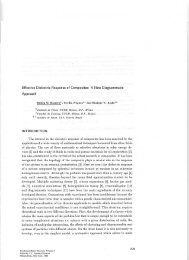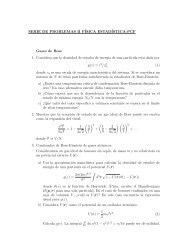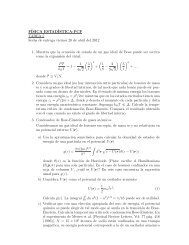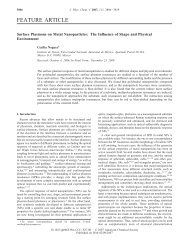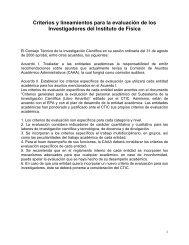Intel(R) - Computational and Systems Biology at MIT
Intel(R) - Computational and Systems Biology at MIT
Intel(R) - Computational and Systems Biology at MIT
You also want an ePaper? Increase the reach of your titles
YUMPU automatically turns print PDFs into web optimized ePapers that Google loves.
7 <strong>Intel</strong>® M<strong>at</strong>h Kernel Library User’s GuideIn other cases where RTL dependencies might arise, the functions are delivered as sourcecode <strong>and</strong> it is the responsibility of the user to compile the code with wh<strong>at</strong>ever compileremployed.In particular, Fortran 90 modules result in the compiler-specific code gener<strong>at</strong>ion requiringRTL support, so, <strong>Intel</strong> MKL delivers these modules as source code.Mixed-language programming with <strong>Intel</strong>® MKLAppendix A lists the programming languages supported for each <strong>Intel</strong> MKL functiondomain. However, you can call <strong>Intel</strong> MKL routines from different language environments.This section explains how to do this using mixed-language programming.Calling LAPACK, BLAS, <strong>and</strong> CBLAS Routines from C LanguageEnvironmentsNot all <strong>Intel</strong> MKL function domains support both C <strong>and</strong> Fortran environments. To use <strong>Intel</strong>MKL Fortran-style functions in C/C++ environments, you should observe certainconventions, which are discussed for LAPACK <strong>and</strong> BLAS in the subsections below.LAPACKAs LAPACK routines are Fortran-style, when calling them from C-language programs, makesure th<strong>at</strong> you follow the Fortran-style calling conventions:• Pass variables by 'address' as opposed to pass by 'value'.Function calls is Example 7-1 <strong>and</strong> Example 7-2 illustr<strong>at</strong>e this.• Store your d<strong>at</strong>a Fortran-style, th<strong>at</strong> is, in column-major r<strong>at</strong>her than row-major order.With row-major order, adopted in C, the last array index changes most quickly <strong>and</strong> thefirst one changes most slowly when traversing the memory segment where the array isstored. With Fortran-style column-major order, the last index changes most slowlywhereas the first one changes most quickly (as illustr<strong>at</strong>ed by Figure 7-1 for a 2Darray).7-4




